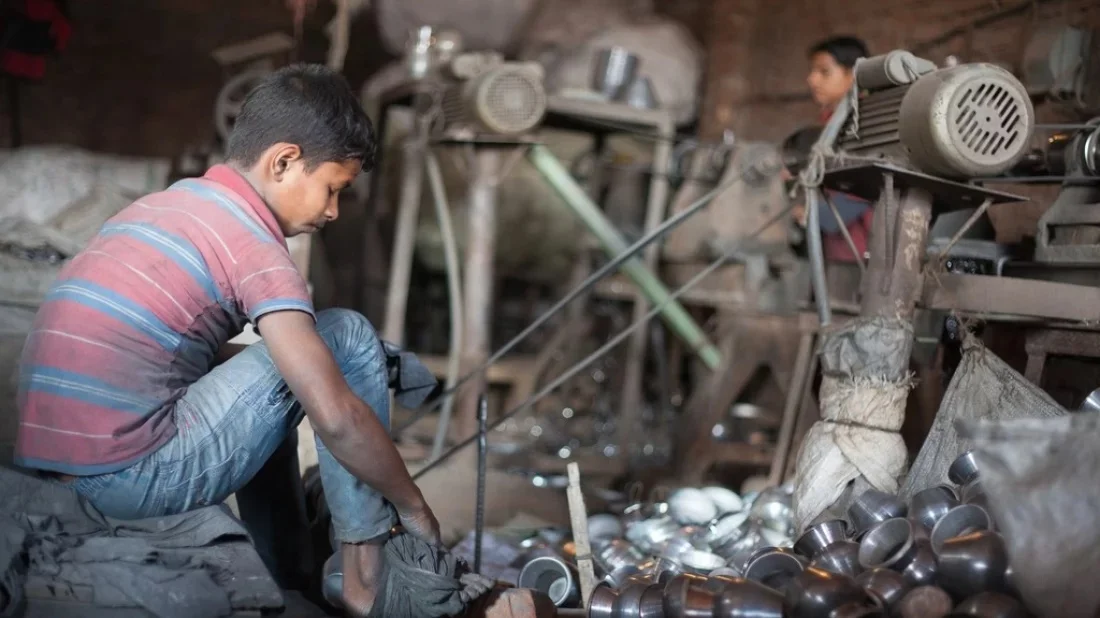Child labour: Lives consumed by lengthy work shifts
Share on:

Survey reveals alarming child labour rates Experts raise concerns over child labour in informal sector
In 2015, Khulna witnessed the tragic death of 13-year-old Rakib due to inhumane torture, sparking widespread concern online and shedding light on child labour in automobile repair shops or garages across Bangladesh.
He fell ill after air was forced through his anus via a compressor machine, leading to his death despite medical intervention.
Around nine years later, allegations of torture of another Rakib at “Jamal Honda Garage” in Comilla's Burichang upazila have emerged. According to his mother, he was subjected to abuse on April 27 for arriving late at the garage.
In between, there were reports in newspapers at different times on the torture and killing of 21 other children employed at garages.
The prevalence of such young children working in garages continues to surprise people.
Mominul, a 12-year-old employed at a garage in Dhaka’s Agargaon, said he had been working there for two years and that his dream was to open his own garage one day. “I am learning the ropes."
When questioned about his working hours, he responded with a hint of annoyance: "What it usually is–around 12 hours."
The United Nations Convention on the Rights of the Child classifies individuals under 18 as children. However, acknowledging the socioeconomic conditions in Bangladesh, the definition of a child has been adjusted to include those up to 14 years of age. Child labour is the employment of boys and girls who are not yet fully physically mature. According to the law, they are prohibited from engaging in child labour, and there is no scope for involving anyone in hazardous child labour.
Nonetheless, the future of numerous children in the country remains threatened by child labour due to poverty and familial obligations. The faces of these child workers are a familiar sight at welding factories and garages across various cities.
Alarming stats
The Bangladesh Bureau of Statistics (BBS), in partnership with the International Labour Organization (ILO), conducted a survey in the country following its own methodology, aiming to assess the national estimate of children aged 5 to 17 employed in five hazardous sectors. Data collection for the survey took place from February 5, 2022, to May 5, 2023. The survey report emphasizes the types of child labour and the common characteristics of children involved in the five sectors.
Per the BBS, the government has officially identified 43 sectors as at risk for child labour. Among the five sectors surveyed in the Child Labour Survey 2023, the highest number of children, totalling 24,923, are employed in automobile workshops.
The survey reveals that the total number of child labourers across the five sectors are as follows: 898 in dried fish production; 5,281 in the leather footwear industry; 4,099 in welding or as gas burner mechanics; 24,923 in automobile workshops; and an additional 2,805 in the informal sector and local tailoring or garment sector. This data indicates that the automobile sector employs the largest share of child labourers among the five unsafe sectors.
According to the National Child Labour Survey 2022, there are approximately 3.54 million child labourers aged between 5 and 17 in Bangladesh. Among them, 1.07 million are engaged in risky forms of child labour. Of the total, 2.73 million child labourers reside in rural areas, while 0.81 million are in urban areas.
When questioned about the 12-hour work shifts in various garages, adult workers in Dhaka’s Badda defended the practice, citing their own upbringing in similar circumstances. They argued that learning work skills was essential for building a future.
In one garage owned by Kabir, three children aged between 11 and 13 are employed for tasks like fetching tea, making deliveries, washing motorbikes, etc.
Kabir, when questioned about the remuneration for the children's work, emphasized that he was teaching them crucial skills, as requested by their parents.
He said the parents did not expect any compensation. However, he acknowledged occasionally rewarding them, like how he had given them each Tk500 for Eid.
Additionally, customers who visited the garage often tipped them around Tk10 for their services, Kabir added.
Experts sound alarm
Abdullah Al Mamun, a longstanding advocate for children's rights associated with both local and international organizations, said the informal sector employed the majority of working children, at around 77%.
He noted that a significant portion of child labourers worked in automobile workshops, saying that these workshops were often situated near children's homes, leading families to believe that starting as a child could eventually lead to mastery over work.
Mamun said in the informal sector, there was no guarantee of compensation for the long hours worked, and due to its informal nature, monitoring by the labour department was not feasible.
Gowhar Naeem Wara, a children’s affairs researcher and expert in disaster management, highlighted the issue of unpaid work among children, saying they spent most of their day "learning to work" without receiving any pay.
She noted that parents often saw this as an investment in their child's future, believing that starting early would secure their place in the industry.
However, Gowhar pointed out that this approach rarely led to the desired outcome.
Despite working 10 to 12 hours, these children were not recognized as workers, their wages were inadequate and the focus remained solely on "learning to work" rather than ensuring their well-being, she added.

